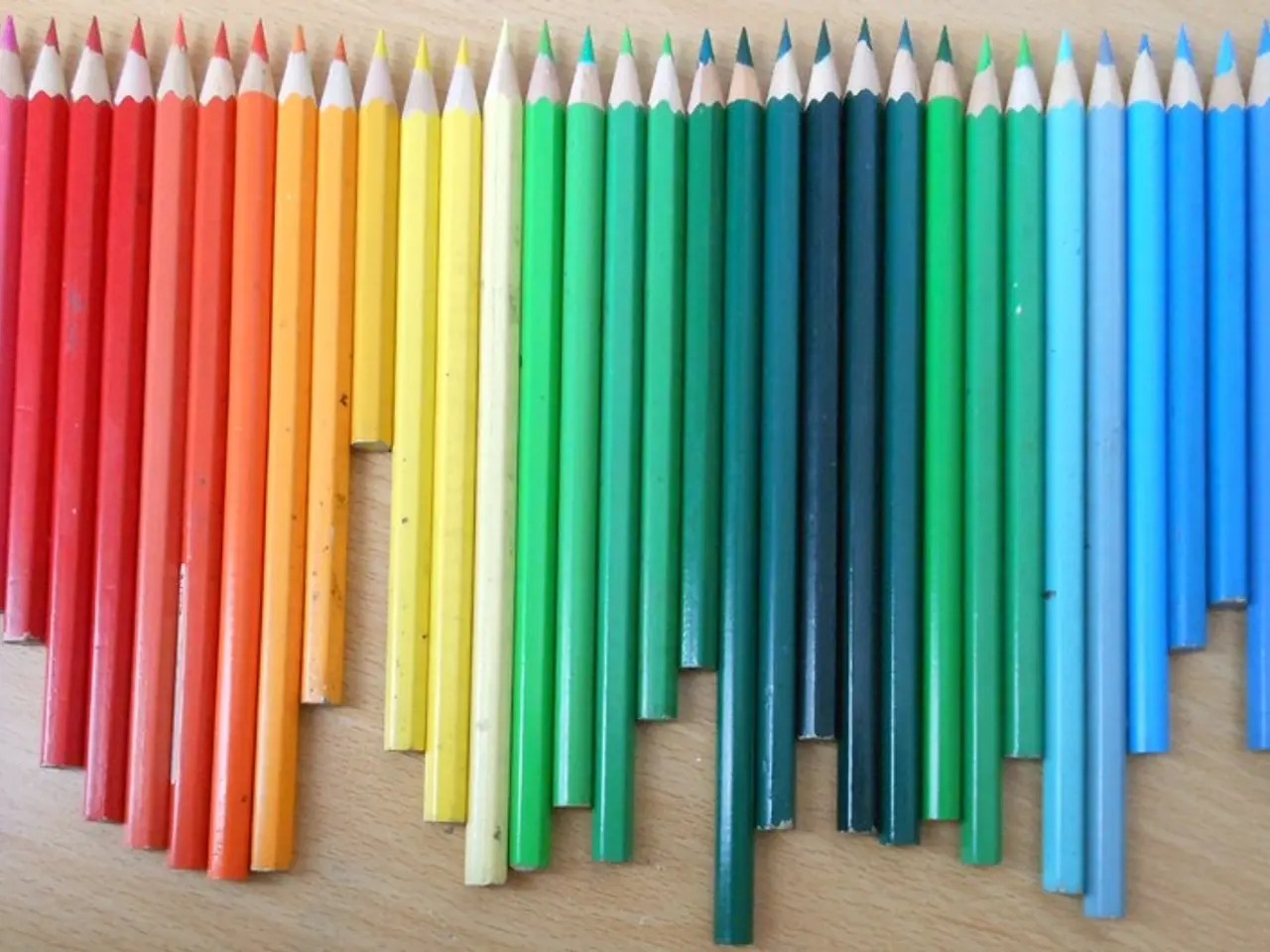Exploring the Art of Color Pencil Drawings: Delving into the Basics of Color Composition
Color pencil drawing, a versatile and enjoyable medium, offers artists a world of possibilities for creating detailed, vibrant, and textured works. From beginners to advanced artists, there are various techniques to master and experiment with.
The Art of Blending
Blending unifies colors and gives artwork a polished appearance. Effective blending methods include pencil blending, blending tools, burnishing, and solvents. Blurring the dividing lines between light and shadow can result in softer transitions. Experimenting with tools like blending stumps, paper towels, or erasers can enhance textures.
Building a Color Palette
A well-structured color palette simplifies the process and guarantees harmony in drawings. Tips for building a palette include starting with primary colors, adding complementary colors, incorporating neutral tones, limiting the number of colors, and testing before using.
Layering and Pressure
Pressure is essential for adjusting color intensity and texture, while layering builds depth and richness in drawings. Layering multiple light strokes builds depth and richness, but beware of overworking the paper, as this can damage its texture and reduce the quality of the drawing.
Advanced Techniques
Advanced colored pencil drawing techniques for experienced artists include refined layering and blending methods, working on unconventional surfaces like drafting film, intricate texturing, and mixed media approaches to enhance detail and depth.
Incorporating patterns like repetitive patterns can help replicate textures such as fur or wood. One sophisticated technique is using drafting film as a drawing surface. Artists apply layers of colored pencil, then use a lighter pencil to push pigment aside, creating highlights or textures by removing pigment rather than just adding it.
Layering multiple colors, including middle tones, helps to blend and transition between dark and light areas smoothly, adding realism while preserving vibrancy. Intricate detailing can be achieved through pointillism, a method of building images with tiny dots of color to produce detailed gradations and texture effects.
Mixed media techniques can also be combined with colored pencils, such as layering over watercolor washes or using gel pens and fine liners to enhance fine details and textures. These methods increase complexity and visual interest, allowing artists to push the boundaries of what colored pencils alone can achieve.
Lighting and Color Theory
Identifying the direction and strength of the light source is essential for creating realistic light and shadows. Contrast between light and dark tones emphasizes raised or recessed areas in drawings. Color theory helps understand how colors interact and the emotions they convey. Key concepts include hue, value, saturation, warm and cool colors, contrast and harmony, color psychology, and using the color wheel.
Caring for Your Work
Using fixative spray, storing in acid-free sleeves, avoiding direct sunlight, handling with care, and framing under glass can protect color pencil drawings from damage and fading. Choosing a complementary frame, using a mat board, considering lighting, placing in a safe area, and rotating displayed pieces can enhance the beauty and protection of color pencil drawings.
In conclusion, mastering color pencil drawing involves a blend of technique, creativity, and patience. Whether you're a beginner or an experienced artist, there's always room to grow and explore the boundless possibilities that this medium offers.
Exploring Watercolor and Learning TechniquesUsing watercolor to create shading and transitions can further enhance the vibrancy and texture of color pencil drawings. Learning watercolor techniques, such as wet-on-wet and dry-brush methods, can offer a wider range of possibilities for artists.
Education-and-self-development through PracticeRegardless of skill level, practice is essential for continued growth and mastery in color pencil drawing. Engaging in regular practice and exploring new techniques can foster increased creativity and technical proficiency.




